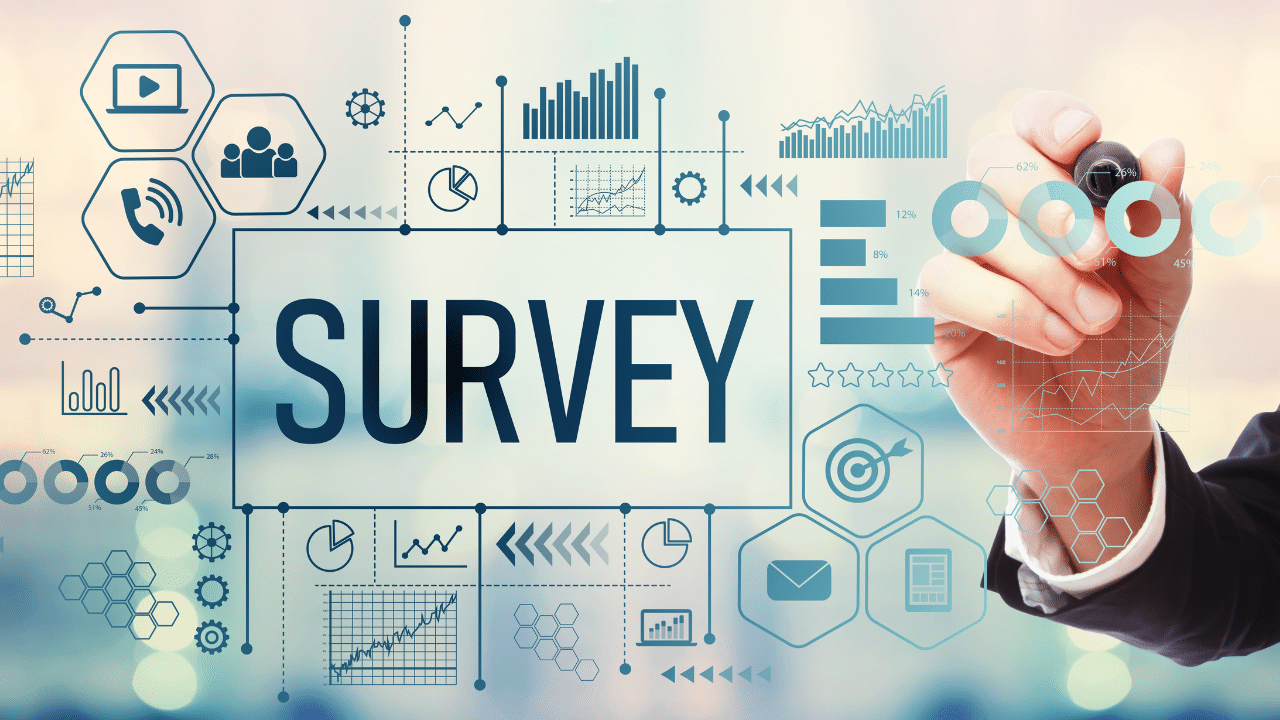Market research is the backbone of informed decision-making in any successful business strategy.
When it comes to understanding market research, questions abound. As a business university lecturer with a Ph.D. in Strategic Management and co-founder of Globemonitor Market Research Agency, I’ve come across countless inquiries from professionals, students, and entrepreneurs.
This Market Research FAQs guide is designed to address the most common questions I receive from students and clients alike, covering everything from the fundamentals of market research to the latest industry trends and career opportunities.
By exploring this guide, you’ll gain insights backed by years of academic research and real-world experience.
For a deeper dive into market research principles and strategies, I encourage you to explore our Market Research Academy, where you’ll find a wealth of resources to expand your knowledge.
1. General Market Research FAQs

What is market research?
Market research is the systematic process of collecting, analyzing, and interpreting data about a target market, competitors, and consumer behavior. This data helps businesses understand the environment in which they operate, identifying trends, opportunities, and potential challenges.
Why is market research important?
Market research is vital for businesses to understand their customers, evaluate market trends, and stay competitive. It ensures that business decisions are informed by real data rather than assumptions, which can significantly reduce risk and lead to more successful strategies.
What are the different types of market research?
The two main types of market research are:
- Primary research: Collecting original data directly from sources such as consumers through surveys, focus groups, or interviews.
- Secondary research: Analyzing existing data from industry reports, academic studies, or competitor analysis to gain market insights.
What are the objectives of market research?
The primary objectives include identifying customer needs, analyzing market trends, evaluating the competitive landscape, and providing insights that help businesses make informed decisions about product development, marketing strategies, and growth opportunities.
How does market research differ from marketing research?
Market research focuses on understanding the broader market, including customer behavior, competitors, and market trends. Marketing research, in contrast, is narrower in scope, focusing specifically on evaluating the effectiveness of marketing campaigns, branding, and advertising strategies. For a more in-depth guide on the difference between market research and marketing research, check out this comprehensive article: Market Research vs. Marketing Research.
How can market research impact business decisions?
Market research provides data-driven insights that guide crucial business decisions, such as product development, pricing strategies, market entry, and customer engagement. It helps companies avoid costly mistakes by aligning their strategies with market realities.
What are the stages of market research?
The stages typically include:
- Defining the problem or objective: Clarifying the specific issue or opportunity the research will address.
- Developing a research plan: Deciding on the research methods and tools to be used.
- Collecting data: Gathering information through primary or secondary research methods.
- Analyzing data: Interpreting the findings to extract meaningful insights.
- Presenting findings: Summarizing results to inform decision-making processes.
What role does market research play in product development?
Market research is crucial in product development as it helps identify unmet customer needs, preferences, and pain points. By understanding consumer feedback early in the development process, companies can create products that resonate with their target audience and reduce the risk of product failure.
Why do companies invest in market research?
Companies invest in market research to gain a competitive edge, make informed decisions, and reduce uncertainty in their business strategies. Market research helps businesses understand customer needs, evaluate competitors, and identify emerging market opportunities, leading to higher success rates in product launches and marketing efforts.
How can market research help in reducing business risks?
Market research minimizes risks by providing data on market demand, consumer preferences, and competitive dynamics. This information allows businesses to make better decisions about product offerings, pricing strategies, and market positioning, reducing the likelihood of costly mistakes.
How important is market research for startups?
For startups, market research is critical for validating business ideas, identifying target markets, and understanding customer behavior. It helps startups allocate resources effectively and avoid investing in products or services that lack demand, increasing the chances of early success.
2. Market Research Analysts and Careers

What are the major players in the market research industry?
The major players in the market research industry include:
- Nielsen: A leader in consumer behavior and media research.
- Ipsos: Known for global market research in various industries.
- Kantar: Specializes in consumer insights and brand research.
- GfK: Offers data-driven insights into consumer behavior.
- Forrester Research: Focuses on technology, customer experience, and business strategy.
- McKinsey & Company: A global management consulting firm offering market research services. These companies provide a range of services, including custom and syndicated research.
Are market research analysts in demand?
Yes, market research analysts are in high demand across industries. As businesses increasingly rely on data to make informed decisions, the need for professionals who can analyze market trends and consumer behavior has grown significantly.
What is the job outlook for market research analysts?
The job outlook for market research analysts is very positive, with the U.S. Bureau of Labor Statistics predicting a faster-than-average job growth rate. The increasing reliance on data-driven decision-making across sectors is fueling this demand.
What industries employ market research analysts the most?
Industries that employ market research analysts the most include advertising and public relations, retail, healthcare, financial services, technology, and manufacturing. These industries require market insights to stay competitive and innovate.
How has the demand for market research analysts changed over time?
The demand for market research analysts has increased significantly over the past decade due to the rise of big data and digital analytics. As businesses recognize the value of data in shaping their strategies, the role of analysts has become more critical.
What do market research analysts do?
Market research analysts collect and analyze data about consumers, competitors, and market conditions. They provide insights that help companies make informed decisions about product development, marketing strategies, and business growth.
What are the daily responsibilities of a market research analyst?
Daily responsibilities of a market research analyst include gathering data through surveys or secondary sources, analyzing trends using statistical tools, preparing reports, and presenting findings to stakeholders to inform business strategies.
How do market research analysts interpret data?
Market research analysts use statistical analysis tools like SPSS, R, or Excel to process and analyze data. They look for patterns and trends that help them draw conclusions about consumer behavior, market conditions, and competitive positioning.
How do market research analysts contribute to marketing strategies?
Market research analysts provide data-driven insights that shape marketing strategies. They help businesses understand their target audience, evaluate the effectiveness of marketing campaigns, and identify new opportunities for reaching potential customers.
Where do market research analysts work?
Market research analysts work in a variety of settings, including market research firms, in-house research departments, consulting firms, advertising agencies, and government organizations. Many also work in industries like healthcare, technology, and retail.
What are the primary industries hiring market research analysts?
Primary industries hiring market research analysts include advertising and PR, retail, finance, healthcare, and manufacturing. These industries use market data to make strategic business decisions and remain competitive.
Can market research analysts work remotely?
Yes, many market research analysts can work remotely, especially with the rise of digital tools that enable data collection and analysis. Remote work is increasingly common in this field, allowing flexibility in job location.
How do you get an entry-level job in market research?
To get an entry-level job in market research, a bachelor’s degree in marketing, business, or a related field is typically required. Internships, proficiency in data analysis tools, and strong communication skills can also help candidates stand out.
What degrees and certifications are needed for market research roles?
A bachelor’s degree in business, marketing, economics, statistics, or a related field is usually required. Certifications in data analysis tools or market research, such as the Professional Researcher Certification (PRC), can enhance job prospects.
Why pursue market research as a career?
Pursuing a career in market research offers the opportunity to work with data, shape business strategies, and influence key decisions. It’s a dynamic field that combines creativity with analytical skills, and it’s in high demand across various industries, from technology to healthcare.
What qualifications are required for a career in market research?
Typically, a bachelor’s degree in business, marketing, economics, or statistics is required. Some roles may require advanced degrees, and certifications in data analytics or market research techniques can also be beneficial.
What skills are essential for a market research professional?
Critical skills include strong analytical abilities, proficiency in data analysis software (such as SPSS, R, or Excel), excellent communication skills to present findings clearly, and a deep understanding of consumer behavior and market trends.
What are the growth opportunities in market research as a career?
Market research professionals can grow into senior roles such as research managers, directors, or consultants. Opportunities also exist to specialize in areas like data analytics or consumer insights. With experience, professionals can lead research teams or start their own agencies, benefiting from the increasing demand for data-driven business strategies.
What are the salary ranges in the market research field?
Salaries in the market research field vary based on experience, location, and industry. Entry-level positions typically start at around $45,000 to $55,000 per year, while experienced analysts can earn $70,000 to $100,000 or more annually.
What are the best-paying market research job titles?
The best-paying market research job titles include senior market research analyst, market research director, data scientist, and market research consultant. These roles often come with salaries exceeding $100,000, depending on experience and industry.
Which companies offer the highest salaries for market research professionals?
Top companies offering the highest salaries for market research professionals include:
- Nielsen: Offers competitive salaries, particularly for experienced analysts and managers.
- Kantar: Known for paying well in higher-level research and consulting roles.
- McKinsey & Company: Offers some of the highest salaries in the industry, especially for experienced consultants and data scientists.
3. Conducting Market Research

What are the steps in conducting market research?
The steps in conducting market research typically include:
- Defining the research problem or objective: Clearly identifying what you need to learn or understand.
- Developing a research plan: Deciding on the research methods, target audience, and data collection techniques.
- Data collection: Gathering data through surveys, interviews, focus groups, or secondary sources.
- Data analysis: Using statistical tools to interpret the data and identify patterns or trends.
- Reporting and presenting findings: Summarizing the insights to inform business decisions.
- Making recommendations: Offering actionable insights based on the findings.
How is qualitative market research conducted?
Qualitative market research is conducted by gathering non-numerical data through methods such as interviews, focus groups, and open-ended surveys. The goal is to explore attitudes, motivations, and behaviors, providing in-depth insights into customer experiences and perceptions.
How is quantitative market research conducted?
Quantitative market research is conducted using structured techniques like surveys, questionnaires, and statistical tools to collect numerical data. The goal is to quantify variables such as consumer preferences, behaviors, or market sizes, which can then be analyzed for trends and patterns.
What tools are used for conducting market research?
Tools used for conducting market research include:
- Surveys and questionnaires: Platforms like SurveyMonkey, Google Forms, and Typeform.
- Focus group and interview tools: Zoom or in-person recordings.
- Data analysis software: Tools like SPSS, R, Excel, and Tableau for processing and visualizing data.
- CRM systems: Salesforce or HubSpot for tracking consumer interactions.
- Social media monitoring tools: Tools like Hootsuite and Brandwatch to track online discussions and trends.
How do you ensure the accuracy of market research?
To ensure accuracy, researchers should use representative samples, employ reliable data collection methods, and cross-validate data with multiple sources. Ensuring the survey questions are unbiased, clear, and relevant is essential. Additionally, using statistical techniques like margin of error and confidence intervals helps ensure the validity of quantitative results.
What are the challenges in conducting market research?
Challenges in conducting market research include:
- Sampling bias: Not having a representative sample of the population.
- Survey fatigue: Respondents losing interest in long surveys, leading to incomplete or inaccurate data.
- Data interpretation: Misinterpreting data due to lack of context or incorrect analysis.
- Cost and time: Conducting thorough research can be expensive and time-consuming.
- Changing consumer behavior: Rapid shifts in trends can make data quickly outdated.
When should businesses consider conducting market research?
Businesses should consider conducting market research when launching a new product, entering a new market, assessing customer satisfaction, or when significant changes in consumer behavior or competition are observed. Market research is essential during strategic planning phases to inform critical decisions.
When should market research be updated or repeated?
Market research should be updated or repeated whenever market conditions change, such as shifts in consumer preferences, technological advancements, or new competitors entering the market. Regular updates (e.g., annually or quarterly) ensure businesses remain aligned with market trends.
When is primary market research required?
Primary market research is required when a company needs specific, original data that isn’t available through secondary sources. It is typically necessary when launching new products, testing concepts, or gathering feedback directly from target audiences.
How do you decide between primary and secondary research?
The decision between primary and secondary research depends on the data needs.
- Use primary research when specific, original insights are required, or if secondary data is outdated or irrelevant.
- Use secondary research when readily available information (e.g., reports, industry data) can address the research question quickly and at a lower cost.
4. Types and Methods of Market Research

What is the difference between exploratory, descriptive, and causal research?
- Exploratory research is used when little is known about a problem or when seeking to explore new ideas or understand general trends. It’s often unstructured and flexible, using methods like interviews or focus groups.
- Descriptive research focuses on understanding the characteristics of a market or demographic. It provides answers to “who,” “what,” “when,” and “where” using structured methods like surveys or observational studies.
- Causal research aims to establish cause-and-effect relationships by testing hypotheses. This method is highly structured, often involving experiments to determine how changes in one variable impact another.
What are the common market research methods?
Common market research methods include:
- Surveys: Gathering quantitative data through structured questionnaires.
- Interviews: Conducting in-depth conversations to explore qualitative insights.
- Focus groups: Collecting feedback from a small group of people discussing a product or concept.
- Observation: Watching how customers interact with products in real-world or simulated environments.
- Experiments: Testing variables to determine cause and effect (common in causal research).
What market research strategies are there?
Market research strategies can be divided into qualitative (exploring attitudes, motivations, and behaviors) and quantitative (gathering numerical data to identify trends and patterns). Within these, common strategies include conducting surveys, focus groups, in-depth interviews, and using digital analytics tools to track customer behavior.
What are the latest trends in market research methods?
Current trends include:
- AI and machine learning: Automating data analysis to identify trends faster and more accurately.
- Big data analytics: Leveraging large datasets to gain deeper market insights.
- Social media analytics: Monitoring online conversations and behaviors to understand consumer sentiment in real time.
- Mobile surveys: Reaching consumers directly on their smartphones for real-time feedback.
- Behavioral research: Observing customer actions to understand decision-making processes.
Which market research method is best for startups?
For startups, lean and cost-effective methods like online surveys, interviews, and social media listening are ideal. Primary research through customer feedback can be invaluable, while secondary research helps to quickly gather existing market data. Using digital tools for analytics and social media can also provide insights without large expenses.
What are qualitative and quantitative research methods?
- Qualitative research methods focus on understanding underlying reasons, motivations, and opinions through open-ended questions, interviews, or focus groups. It provides depth and context but is harder to quantify.
- Quantitative research methods gather numerical data through structured methods like surveys or experiments, allowing for statistical analysis and the identification of broader trends.
What is market segmentation, and why is it important?
Market segmentation is the process of dividing a broad target market into smaller, more defined groups based on shared characteristics, such as demographics, behavior, or needs. It is important because it allows businesses to tailor their products, marketing, and services to the specific needs of each segment, improving customer satisfaction and business efficiency.
What is the difference between probability and non-probability sampling?
- Probability sampling involves random selection, where each member of the population has an equal chance of being chosen. This method is more reliable for producing statistically valid results.
- Non-probability sampling is based on non-random selection, often used for convenience or when a specific subset is targeted. While faster and cheaper, it may introduce bias and is less representative of the broader population.
How large should my sample size be?
The required sample size depends on the research objectives, desired confidence level, margin of error, and population size. Larger sample sizes provide more reliable data but can be more expensive and time-consuming. Typically, a sample size of 200–500 respondents is considered reliable for most market research, but this can vary based on the study’s goals.
What is conjoint analysis in market research?
Conjoint analysis is a technique used to understand how customers value different features or attributes of a product or service. Respondents are asked to evaluate multiple product options with varying features, and the analysis helps determine which attributes are most important in their decision-making process. This method is often used in pricing and product development.
5. Market Research Tools and Techniques

What tools and software are available for market research?
A variety of tools and software are available to streamline market research, including:
- Survey platforms: Tools like SurveyMonkey, Google Forms, and Typeform for designing and distributing surveys.
- Data analysis software: SPSS, R, and Excel for statistical analysis and data visualization.
- CRM systems: Salesforce and HubSpot for tracking customer interactions and behaviors.
- Social media listening tools: Hootsuite, Brandwatch, and Sprout Social for monitoring conversations and trends across social media platforms.
- Digital analytics: Google Analytics and Adobe Analytics for tracking website traffic and user behavior.
- Panel management tools: Tools like Qualtrics and Toluna to manage and access respondent panels for surveys.
How is data mining used in market research?
Data mining involves analyzing large datasets to identify patterns, trends, and relationships. In market research, data mining is used to uncover hidden insights about consumer behavior, purchasing patterns, and market trends, allowing businesses to predict future behaviors and refine their strategies.
What is predictive analytics in market research?
Predictive analytics uses statistical algorithms and machine learning to analyze historical data and predict future outcomes. In market research, it helps businesses forecast trends, anticipate customer needs, and make data-driven decisions about product development, marketing, and sales strategies.
How does digital analytics fit into market research?
Digital analytics involves tracking and analyzing online behaviors, such as website visits, clicks, and user interactions. It fits into market research by providing insights into consumer behavior in digital environments, helping businesses optimize websites, measure the success of digital marketing campaigns, and understand the customer journey online.
How does social media play a role in market research?
Social media is a rich source of real-time consumer insights. By using social media listening tools, businesses can monitor conversations, track brand mentions, and gauge public sentiment. Social media platforms also allow for direct engagement with customers through polls, surveys, and focus groups, providing valuable feedback on products and services.
How do you conduct a competitive analysis in market research?
A competitive analysis involves gathering and analyzing data about competitors to understand their strengths, weaknesses, and market positioning. Key steps include:
- Identifying direct and indirect competitors.
- Analyzing competitors’ products, pricing, marketing strategies, and customer reviews.
- Monitoring competitors’ online presence, including website traffic and social media engagement.
- Conducting a SWOT analysis (Strengths, Weaknesses, Opportunities, Threats) to assess their market standing.
What is customer journey mapping, and how is it used in market research?
Customer journey mapping is a visual representation of the steps a customer goes through when interacting with a company, from awareness to purchase and post-purchase behavior. It is used in market research to identify pain points, improve customer experience, and optimize touchpoints to enhance engagement and satisfaction.
How do you gather data for market research?
Data for market research is gathered through both primary and secondary methods:
- Primary data: Collected directly from the target audience through surveys, interviews, focus groups, and observation.
- Secondary data: Sourced from existing reports, academic studies, industry databases, government publications, and competitor analysis.
What is a perceptual map, and how is it used?
A perceptual map is a visual tool that shows how consumers perceive a brand or product relative to competitors based on key attributes (e.g., price, quality). Businesses use perceptual maps to understand their positioning in the market and identify gaps or opportunities for differentiation.
How do you test product concepts using market research?
Product concepts are tested using methods like:
- Concept testing surveys: Asking potential customers to evaluate new product ideas based on descriptions, images, or prototypes.
- Focus groups: Engaging small groups to discuss and provide feedback on new product concepts.
- A/B testing: Comparing consumer responses to different versions of a product or marketing message.
- Simulated market testing: Creating a controlled environment where potential customers can interact with the product and provide feedback.
7. Practical and Financial Aspects of Market Research

How do businesses account for market research expenses?
Market research expenses are typically accounted for as operating expenses in the company’s income statement. These costs may include data collection, consulting fees, and software or tools used in the research process. Businesses record these expenses as part of their marketing or research and development (R&D) budgets.
Is market research considered an asset or a cost?
Market research is generally considered a cost because it is a business expense that helps generate insights for decision-making. However, in certain cases, research that leads directly to the development of a new product or intellectual property may be considered an intangible asset if it provides long-term value.
Are market research incentives taxable?
Yes, market research incentives, such as cash or gift cards given to participants, are typically considered taxable income for the recipients. In most countries, participants must report these incentives as part of their taxable earnings, and businesses may need to issue tax forms (e.g., a 1099 form in the U.S.) for larger amounts.
Are there tax deductions for market research expenses?
Yes, businesses can often deduct market research expenses from their taxable income. These deductions typically fall under marketing, advertising, or research and development (R&D) categories. Companies should keep thorough records of all research-related costs to claim these deductions.
Can market research be capitalized?
In some cases, market research expenses can be capitalized if the research leads to the development of a new product, service, or intellectual property. Capitalizing these costs allows businesses to spread the expense over time as they derive future benefits from the research, rather than recognizing it all in the same period.
How do you calculate return on investment (ROI) for market research?
To calculate ROI for market research, businesses compare the financial gain or benefit derived from implementing research findings with the cost of conducting the research.
For example, if market research helps a company increase sales or avoid costly mistakes, the profit or savings generated can be compared to the research investment.
How can successful market research impact a product’s trajectory?
Successful market research can have a profound impact on a product’s trajectory by:
- Identifying customer needs and preferences, leading to products that resonate with the target audience.
- Shaping product features and pricing strategies to better fit market demand.
- Preventing costly mistakes, such as launching a product that lacks sufficient demand or is priced incorrectly.
- Improving marketing strategies to target the right customer segments more effectively. For example, market research saved Febreze by repositioning it from a product focused on odor elimination to one that made homes smell fresh and inviting, leading to its massive success.
How profitable is the market research industry?
The market research industry is highly profitable, driven by increasing demand for data-driven decision-making across all sectors. Global companies are investing more in understanding customer preferences, competitive landscapes, and emerging trends. The industry’s profitability depends on factors like specialization, technological integration, and offering value-added insights through advanced analytics, AI, and predictive modeling.
8. Customer and Consumer Insights

How do you identify your target audience through market research?
You can identify your target audience through demographic, psychographic, and behavioral segmentation. Market research methods like surveys, focus groups, and data analysis help define who is most likely to purchase your product or service by examining factors such as age, income, location, interests, and buying habits. Tools like social media analytics and customer data platforms (CDPs) also provide insights into audience characteristics.
How do you measure customer satisfaction in market research?
Customer satisfaction is typically measured using surveys that include rating scales (e.g., Likert scale), Net Promoter Score (NPS), and open-ended questions to gather qualitative feedback. Methods like customer satisfaction score (CSAT), focus groups, and follow-up surveys provide insights into customer experiences and highlight areas for improvement.
How do you conduct customer profiling in market research?
Customer profiling involves gathering data on your existing and potential customers to create detailed buyer personas. This is done using a combination of surveys, interviews, and analysis of behavioral data (e.g., purchase history, website interactions). Profiling considers demographic (age, gender), psychographic (lifestyle, interests), and behavioral (purchase frequency, brand loyalty) attributes to create a comprehensive picture of different customer segments.
How can you measure customer loyalty through market research?
Customer loyalty can be measured by analyzing repeat purchase behavior, customer lifetime value (CLV), and Net Promoter Score (NPS), which gauges the likelihood of customers recommending your product or service. Loyalty program data and longitudinal surveys (tracking satisfaction over time) can also help assess how likely customers are to stick with your brand.
What is customer satisfaction research?
Customer satisfaction research is the process of collecting feedback from customers to determine how satisfied they are with your product, service, or brand. This research helps companies understand areas of improvement, strengthen customer relationships, and make data-driven decisions to enhance customer experience. Common tools include CSAT surveys, NPS, and in-depth interviews.
What is sentiment analysis in market research?
Sentiment analysis uses natural language processing (NLP) and machine learning to analyze customer feedback from social media, reviews, and surveys to determine the overall sentiment—whether it’s positive, negative, or neutral. It helps businesses understand how customers feel about their brand or products and track changes in sentiment over time.
How do you track customer preferences over time?
Tracking customer preferences over time involves using longitudinal studies, where data is collected from the same group of customers at different intervals. Other methods include analyzing purchase history, CRM data, and behavioral analytics (e.g., web traffic, app usage) to monitor shifts in consumer choices and preferences.
How do you conduct brand awareness research?
Brand awareness research is conducted using surveys and interviews to assess how familiar customers are with a brand and its products. Aided and unaided recall methods are used to gauge whether consumers can remember a brand name when prompted and unprompted. Social listening tools and web analytics can also help track online mentions and engagement to measure brand recognition and awareness.
What is the role of ethnographic research in market research?
Ethnographic research involves observing customers in their natural environment to gain deeper insights into their behaviors, needs, and cultural influences. It helps businesses understand how customers interact with products in real-life settings and provides rich, qualitative data that traditional surveys may not capture. Ethnographic research is particularly useful for understanding the broader context of consumer behavior.
How do you use A/B testing in market research?
A/B testing involves comparing two versions of a product, website, or marketing campaign to determine which performs better with consumers. In market research, it’s used to test variables such as product features, pricing, or marketing messages by presenting different options to distinct groups and measuring which option leads to higher engagement, conversions, or sales. This method allows businesses to optimize offerings based on real-world feedback.
9. Future of Market Research
How will market research evolve over the next decade?
Market research will evolve to become more automated, data-driven, and real-time. The integration of artificial intelligence (AI), machine learning, and big data analytics will streamline data collection and analysis, offering deeper insights faster. The focus will also shift to more behavioral and predictive analytics, allowing businesses to forecast trends and adapt to consumer behavior proactively.
Will market research be automated?
Yes, many aspects of market research are already being automated, and this trend will continue. Automated tools like survey platforms, chatbots, and AI-driven data analysis will handle tasks like data collection, processing, and pattern identification, freeing researchers to focus on strategic interpretation and decision-making.
What are the benefits and drawbacks of automating market research?
- Benefits: Automation increases efficiency, reduces human error, and allows for quicker data analysis. It enables researchers to process large datasets in real time, providing instant insights and improving decision-making speed.
- Drawbacks: While automation improves efficiency, it may lack the nuance and contextual understanding that human researchers bring to qualitative data. Over-reliance on automation could lead to less personalized research or misinterpretation of complex human behaviors.
How is AI impacting the future of market research?
AI is transforming market research by enabling faster and more accurate data analysis. AI-powered tools can process and analyze massive datasets, identify patterns, and make predictions about consumer behavior. Additionally, AI-driven chatbots can interact with consumers to gather data in real time, while natural language processing (NLP) tools analyze open-ended responses, social media, and reviews for sentiment analysis.
What will market research provide in the future?
In the future, market research will provide more predictive insights and behavioral data to help businesses anticipate market shifts and consumer preferences. It will offer real-time analytics, allowing companies to adjust strategies on the fly. Additionally, market research will increasingly focus on customer experience (CX) and personalization to ensure businesses remain aligned with evolving consumer expectations.
How can future market research techniques improve business decision-making?
Future market research techniques will use predictive analytics and real-time data to offer more accurate forecasts and actionable insights. Businesses will be able to test scenarios, measure outcomes quickly, and make informed decisions faster. As research becomes more personalized and data-driven, companies will better understand niche markets and consumer needs, leading to smarter product development and marketing strategies.
How will technology advancements shape the future of market research?
Advancements in AI, machine learning, and big data will dramatically reshape market research. Tools will enable the analysis of vast datasets, offering deeper insights into customer behaviors and preferences. Blockchain technology may also emerge to ensure the transparency and security of consumer data. The use of virtual reality (VR) and augmented reality (AR) could allow for more immersive product testing and consumer research environments.
What role will behavioral economics play in the future of market research?
Behavioral economics will play a growing role in understanding the underlying psychological and emotional drivers behind consumer decisions. Insights from behavioral economics will help market researchers go beyond traditional surveys to study how cognitive biases, heuristics, and social influences impact purchasing decisions. This will lead to more tailored marketing strategies and product innovations that align with how consumers actually behave.
How can big data be utilized in future market research efforts?
Big data will allow researchers to analyze massive amounts of consumer data from various sources—social media, web analytics, purchase histories, and more. By applying machine learning and AI algorithms, businesses will be able to identify trends, predict customer behaviors, and make decisions based on comprehensive datasets. Big data will also enable micro-segmentation, allowing for highly targeted marketing efforts.
What new tools and techniques are expected to emerge in market research?
Emerging tools and techniques in market research include:
- Voice-activated surveys: Allowing for hands-free, interactive feedback collection through voice assistants like Alexa and Google Assistant.
- Augmented and virtual reality (AR/VR): Creating immersive research environments where participants can test products or services in simulated settings.
- AI-driven qualitative analysis: Automating the analysis of open-ended responses, focus group discussions, and video interviews.
- Blockchain for data transparency: Ensuring more secure and transparent handling of consumer data in market research.
- Emotion and facial recognition software: Allowing companies to measure emotional responses to products or marketing content in real time, providing more precise consumer insights.
A quick overview of the topics covered in this article.
Latest Posts
December 21, 2025
December 21, 2025
Subscribe to our newsletter
Get valuable insights and business guidance sent to your email.













